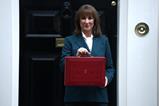Cricket is probably the only field game that men play fully clothed, observes George Pitcher. It reminds him of the "dressing-up wing of the Church”

We held our Vicar’s XI v. Village XI cricket match in our parish last weekend – my team came within four overs of a draw, since you ask. So we’re improving.
It’s become a village tradition, though we’ve only played the fixture twice. That’s because it’s been rained off, then there was covid. And one year the village simply forgot to field a team (so I guess that counts as a bye for the vicar).
Within a moon or two of us retiring to the pub as shadows lengthened, for beer and rounds of ancient toss-a-penny, the Independent Commission for Equity in Cricket (ICEC) published a huge report that stated without reservation that racism, classism, elitism and sexism are “widespread and deep-rooted” in the sport.
Well I never. My first response is not as apologetic as the England and Wales Cricket Board, which called it a “seminal moment”. I’m afraid it’s that cricket, then, must be just like the Church of England. In fact, cricket is the Church of England at play.
I suppose a case could be mounted that both were founded and prospered in colonialism and imperialism. This column is not that case. What, I wonder, on a cricket square in East Sussex, were we doing that was racist, classist, elitist or sexist?
I mean, only about 20 per cent of the players on our field at any given time were educated at Eton. Last year, we had a 19-year-old young woman called Izzy on our side who had played for Surrey and took five wickets. Okay, we were all men this year, but one of us was (and remains) from an ethnic minority. How diverse is that?
Other than the Archbishop of Canterbury, I don’t off-hand know how many Church of England clerics went to Eton. But I do know that its representation of women and ethnic minorities remains as tokenistic as our cricket team. The most recent figures reveal 93.7 per cent of senior staff in the Church - including bishops, archdeacons and cathedral clergy - were white British. And let’s not add up the men.
As for classism and elitism (aren’t these essentially the same?), the signs are more subtle. Here, though, our cricket and the Church are again as one. I believe that cricket is the only international sport that breaks for tea, an institution embedded in the English bourgeoisie.
The Church is also obsessed with tea. A foreigner to England’s shores might assume that this is a hot beverage. In actuality, the cricket tea involves cakes and sandwiches and scones with lashings of cream and jam. Last weekend, we added a side of salmon with hollandaise and new potatoes; the year before, pizzas. Similarly, parish teas make their priests cut figures like Ian Botham in his prime.
look at all that robing with Latin names and prancing about. It’s cricket without balls, isn’t it?
Then there’s the dressing up. I think that cricket is probably the only field game that men play fully clothed. Some of this kit is quite camp, with its whites and sleeveless jumpers, badges, caps and protective boxes for family jewels.
The resonances with the posh, dressing-up wing of the Church are obvious. I mean no particular disrespect to my Anglo-Catholic brothers (and few sisters), but look at all that robing with Latin names and prancing about. It’s cricket without balls, isn’t it?
As to the less visible similarities, I believe there is a moral high ground claimed erroneously by both sports, if I can include the Church as such. Cricket is thought to be played by decent fellows who play up and play the game. The Church would like to be considered in the same way.
But, while both present a placid and gentle exterior, they conceal a viciously competitive interior life. Anyone who has attended a General Synod will have seen that from the houses of bishops to laity. Cricket, from its sledging insults to bodyline controversies and tampered balls, is similarly morality-free under the surface.
Simon Heffer, who wrote in the Daily Telegraph this week that Icec’s report is “nakedly political social engineering”, was umpiring our village match last weekend. I thought there might be an international incident when, between overs, he took his fellow umpire, an Australian, to task over whether a full-toss delivered above the batsman’s waist height should be scored as a no-ball.
Perhaps it was the tension of the current Ashes, but it’s the sort of issue, like angels on a pinhead, that religious wars can be fought over.
It occurs to me that Professor Heffer, whose son Johnnie (Eton) was bowling for us demonically and whose friend Adam (Eton) was keeping wicket, is from that cruelly persecuted minority of the ginger-haired, so I suppose that’s another diversity tick for us. It’s rather, I think, how the CofE addresses its diversity.
They say that the only thing worse than not taking village cricket seriously enough is taking it too seriously. The same might be said of the Church too. And I hope, readers will agree, of this column.





































No comments yet